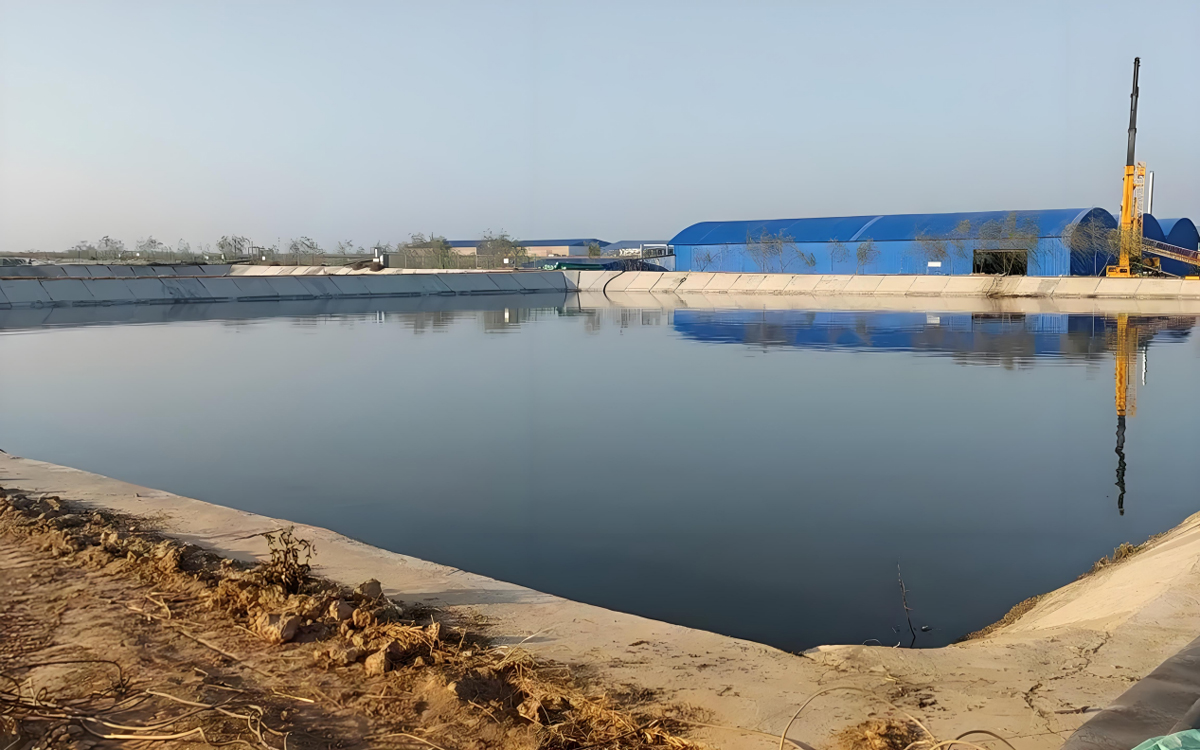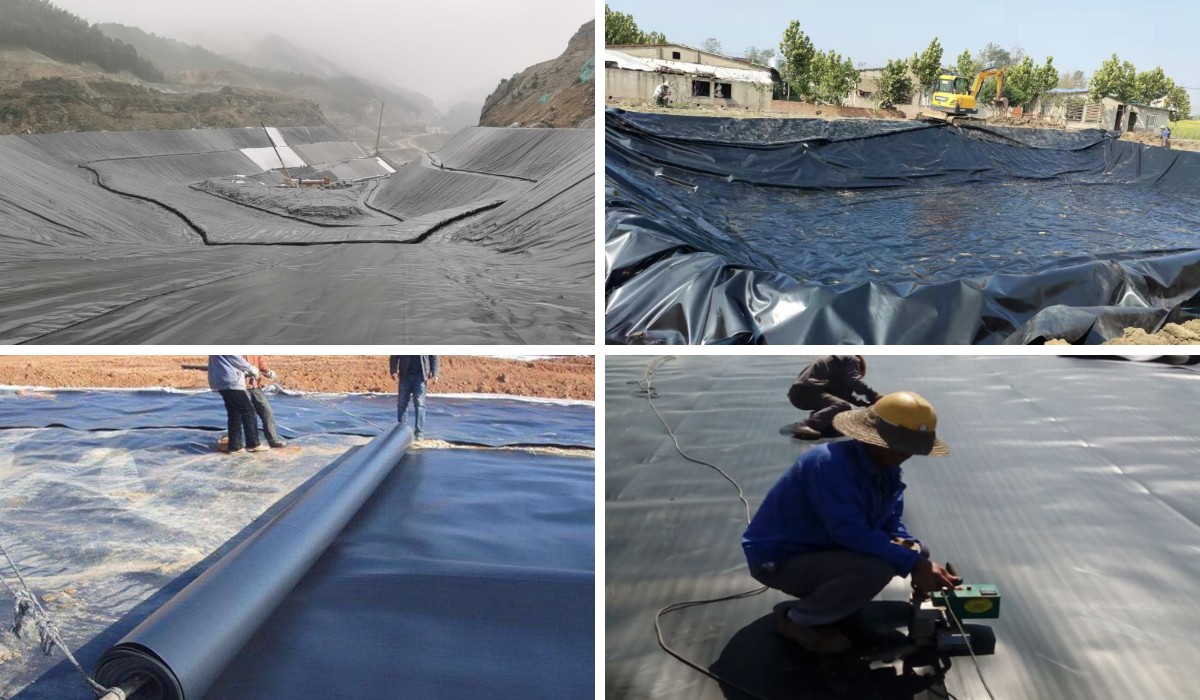Aquaculture Application
1. Aquaculture Industry Definition
Aquaculture involves cultivating aquatic organisms (e.g., fish, crustaceans, mollusks) in controlled environments such as ponds, cages, or recirculating aquaculture systems (RAS) to meet global food demands while reducing reliance on wild fisheries. Key challenges include:
· Water Quality Control: Preventing pathogens, pollutants, and eutrophication.
· Environmental Stability: Regulating temperature, dissolved oxygen, and salinity.
· Resource Efficiency: Minimizing water use and energy consumption.
· Ecological Protection: Reducing sediment pollution and greenhouse gas emissions.
2. Core Applications of Geomembranes/Geotextiles
1. Pond Liners for Water Containment
· Functions:
o Leak Prevention: HDPE geomembranes (permeability ≤1.0×10⁻¹³ cm/s) block groundwater infiltration, reducing water waste by up to 90%.
o Pollutant Isolation: Prevent soil contaminants (e.g., heavy metals, salts) from entering water, maintaining pH 6.5–8.5.
o Algae Suppression: Block sunlight to reduce algal blooms, mitigating oxygen depletion and disease risks.
· Technical Parameters:
o Thickness: 0.3–0.5mm (standard ponds); ≥1.0mm for high-pressure scenarios.
o Materials: HDPE with UV stabilizers for 10+ year lifespan.
2. Greenhouse and Enclosure Systems
· Applications:
o Temperature Regulation: Insulated geomembrane covers stabilize temperatures (winter heating, summer shading).
o Weatherproofing: Protect facilities from extreme weather, reducing energy costs.
· Case Study: Offshore fish farming greenhouses using geomembrane composites achieve year-round thermal stability, improving survival rates by 25%.
3. Disease Control and Biosecurity
· Advantages:
o Sealed Barriers: Block soil-borne pathogens (e.g., Vibrio in shrimp), reducing disease incidence by 40%+.
o Easy Disinfection: Smooth surfaces enable uniform chemical treatment (e.g., chlorine-based solutions).
4. High-Density Intensive Farming
· Scenarios:
o Recirculating Aquaculture Systems (RAS): Geomembrane-lined ponds support high-density stocking (e.g., 500 shrimp/m³).
o Blackwater Digesters: 1.0mm base + 1.5mm cover membranes for methane-resistant manure treatment.
5. Emission Reduction and Sustainability
· Environmental Benefits:
o Methane Reduction: Sealed sediments cut CH₄ emissions by 96%.
o Nitrous Oxide Control: Inhibit denitrification, reducing N₂O by 79%.
· Soil Preservation: Prevent salinization and erosion, extending pond lifespan.
3. Installation and Maintenance
1. Surface Preparation: Clear debris, ensure ≤3cm/2m flatness, moisture <15%.
2. Welding Protocols: Heat fusion at 220–280°C, overlap ≥10cm, air pressure test (0.2MPa for 5 mins).
3. Maintenance:
1. Inspect for punctures/mooring damage; repair promptly.
2. Drain ponds before winter to prevent membrane cracking.
3. Product Selection and Technical Specifications
Product Type | Specifications | Key Performance | Applications |
0.3–1.5mm (smooth/rough) | Tensile strength ≥25MPa, pH 2–12 resistant | Pond liners, digesters | |
400–1000g/m² | Burst strength ≥14kN/m, puncture-resistant | Saline soils, complex terrain | |
Geomembrane + Geotextile | Custom combinations | Dual-layer protection, 20+ year lifespan | Long-term farming, high-value species |
3. Case Studies and Client Value
Case 1: Guangxi shrimp farm (0.5mm geomembrane): 30% yield increase, 6+ tons/year CH₄ reduction. 50% lower maintenance costs, 40% harvest efficiency gain.
Case 2: Yunnan high-density fish farm (1.0mm composite): Water quality compliance improved from 75% to 98%. Antibiotic use reduced by 60%.






